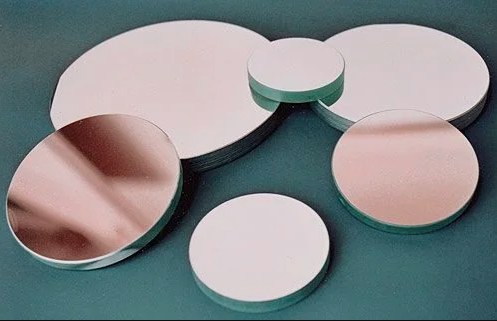Aluminum telescope mirror: Advantages, Manufacturing, and Applications

Aluminum telescope mirror are essential components in many astronomical and observational telescopes, valued for their reflective properties, lightweight nature, and cost-effectiveness. This article provides an in-depth look at aluminum telescope mirror including their advantages, manufacturing processes, and applications in various fields.
What Are Aluminum telescope mirror?
Aluminum telescope mirror are optical mirrors made from aluminum or coated with aluminum, specifically designed for use in telescopes. They are critical for gathering and focusing light from celestial objects, allowing astronomers and scientists to observe and analyze distant phenomena with greater clarity.
Key Features of Aluminum telescope mirror
- High Reflectivity: Aluminum mirrors provide high reflectivity across a broad range of wavelengths, including visible, ultraviolet (UV), and infrared (IR) light. This ensures efficient light collection and improved image quality.
- Lightweight Construction: Aluminum is a lightweight material, which is beneficial for telescope design and handling. It reduces the overall weight of the telescope and facilitates easier mounting and adjustment.
- Cost-Effectiveness: Compared to other materials, aluminum is relatively affordable, making it a cost-effective choice for both amateur and professional telescopes.
- Durability: Aluminum mirrors are durable and resistant to environmental factors such as oxidation, especially when protected by additional coatings.
Manufacturing Process of Aluminum telescope mirror
The manufacturing process of aluminum telescope mirror involves several precise steps to ensure high performance and quality:
1. Substrate Preparation
- Material Selection: High-quality aluminum alloys are chosen for their mechanical and optical properties. The aluminum substrate is cut and shaped to the desired dimensions and curvature using precision machining techniques.
- Surface Cleaning: The substrate undergoes thorough cleaning to remove contaminants and residues that could affect the quality of the reflective coating.
2. Reflective Coating Application
- Aluminum Coating: A thin layer of aluminum is deposited onto the mirror surface to provide the reflective properties. This coating is applied using techniques such as sputtering or evaporation, ensuring a uniform and high-reflectivity layer.
- Protective Coatings: To enhance durability and protect the aluminum coating from oxidation and damage, additional coatings such as dielectric layers or overcoats may be applied. These coatings also improve the mirror’s performance and longevity.
3. Polishing and Finishing
- Polishing: Precision polishing techniques are used to achieve a smooth and accurate surface profile. This step is crucial for minimizing optical aberrations and ensuring high image quality.
- Inspection and Testing: The finished mirror undergoes rigorous inspection and testing to verify its reflective properties, surface quality, and overall performance. Tests may include reflectivity measurements, surface flatness assessments, and alignment checks.
4. Assembly and Integration
- Mounting: The mirror is securely mounted in its telescope housing or optical assembly. Proper alignment and stability are ensured to achieve optimal performance.
- Calibration: In some telescopes, additional calibration may be necessary to fine-tune the mirror’s performance and ensure precise observations.
Read also: The World of Custom made watch: Crafting Personalized Timepieces
Advantages of Aluminum telescope mirror
Aluminum telescope mirror offer several advantages that make them a preferred choice for many telescopes:
1. High Reflectivity
The aluminum coating provides excellent reflectivity, allowing telescopes to gather and focus light effectively. This improves the clarity and brightness of celestial images.
2. Lightweight Design
The lightweight nature of aluminum reduces the overall weight of the telescope, making it easier to handle, mount, and transport. This is particularly beneficial for portable telescopes and observational setups.
3. Cost-Effectiveness
Aluminum is an affordable material compared to alternatives such as silver or gold. This makes aluminum mirrors a cost-effective option for both amateur and professional telescopes.
4. Durability and Longevity
The durability of aluminum mirrors, combined with protective coatings, ensures reliable performance and a long service life. They are resistant to environmental factors such as moisture and temperature fluctuations.
Applications of Aluminum telescope mirror
Aluminum telescope mirror are used in various applications, ranging from amateur astronomy to professional research:
1. Amateur Telescopes
- Visual Observation: Aluminum mirrors are commonly used in amateur telescopes for visual observation of celestial objects, such as planets, stars, and galaxies.
- Astrophotography: In astrophotography, aluminum mirrors help gather light for capturing high-quality images of astronomical phenomena.
2. Professional Telescopes
- Research Observatories: Professional observatories use aluminum mirrors in large telescopes to conduct research and observe distant celestial objects. The mirrors are critical for high-resolution imaging and data collection.
- Space Telescopes: Some space telescopes employ aluminum mirrors for observations from space, where lightweight and durable materials are essential.
3. Educational Telescopes
- Educational Institutions: Aluminum mirrors are used in educational telescopes to provide students and educators with hands-on experience in astronomy and optical science.
Challenges in Aluminum telescope mirror
While aluminum telescope mirror offer many benefits, there are some challenges to consider:
- Coating Quality: Ensuring a high-quality reflective coating is crucial for maintaining mirror performance. Any defects or inconsistencies can affect the image quality.
- Thermal Expansion: Aluminum’s high coefficient of thermal expansion may impact mirror performance in telescopes exposed to significant temperature variations.
The Future of Aluminum telescope mirror
The future of aluminum telescope mirror looks promising with ongoing advancements in materials science, coating technologies, and manufacturing techniques. Innovations are expected to enhance the performance, durability, and cost-effectiveness of aluminum mirrors, expanding their applications in various fields of astronomy and optical science.
Conclusion
Aluminum telescope mirror are essential components in optical systems, offering high reflectivity, lightweight design, and cost-effectiveness. The manufacturing process involves precise steps, including substrate preparation, coating application, polishing, and integration, to ensure optimal performance. With applications ranging from amateur and professional telescopes to educational instruments, aluminum mirrors play a crucial role in modern astronomy and observational science.
As technology continues to advance, aluminum telescope mirror will remain a valuable asset in the pursuit of knowledge and exploration of the cosmos, driving innovations and improvements in optical systems.



